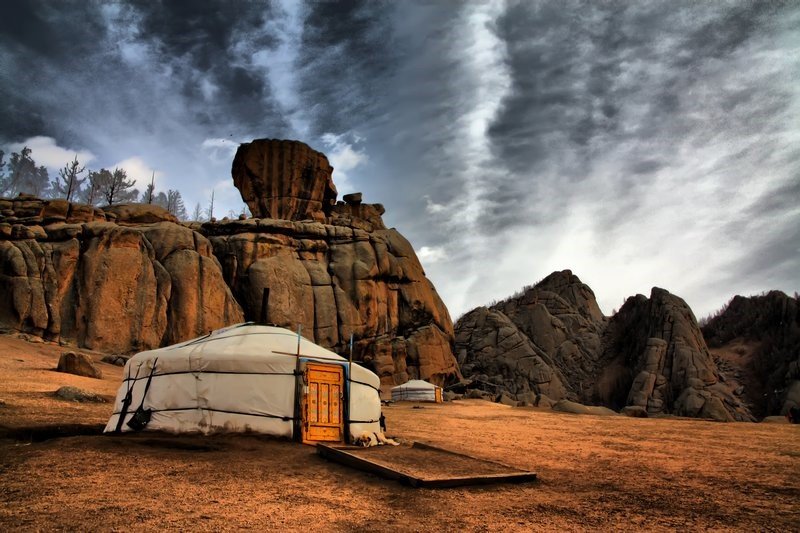From Paleolithic times, a circular shaped ger dwelling proved its practical way to be a suitable shelter for people who had chosen the moveable life over a sedentary lifestyle. It has been inherited from ancient people and has at least 3,000 years of history. The very first Chinese source about this dwelling said “Northern nomadic nations became used to living in a home similar to sophisticated hut”.
For human beings, the home has been always where their heart belongs to. At present, a half of Mongolian nation makes this portable heritage their permanent accommodation, since they follow their animals in search of good grazing land.
Many know this dwelling as a ‘yurt’ which is more used by some minorities in Russia, but in Mongolia it is called a ‘ger’ which means “home” and holds many meanings for Mongolians.
Every nation’s home holds several practical necessities like protection and warmth. The ger is suitable for the extreme continental climate of Mongolia and provides great mobility for their unique lifestyle.
Portable and secure, this time tested home is easily transportable and is quick to assemble or dismantle with the help of two people in an hour. Even one person can take it down. The total weight of a ger is generally 250 – 300 kilograms. Herders always prefer light weighed accommodation which provides both mental and practical necessities.
Perfect for health, with its incredible insulation and ventilation, the ger makes comfortable habitation in both cold and hot temperatures. Further, environmentally friendly materials of the ger come from nature and have no harmful chemical elements. All parts are lightweight which make them convenient to transport. Nomadic households cover their gers with felt material produced with special techniques from sheep’s wool.
Weather proof, it is designed to be persistent through any natural disaster. Interestingly, an assembled ger is the most resistant home in earthquakes. The ger is fastened in the form of a circular shape and strongly rooted to the ground. This is strong enough for even severe strong wind storms.
Natural and environmentally friendly, another great reason that makes the ger eco-friendly is its key components by organic materials such as the felt cover and wooden framework. Nature is recovered quickly because the nomad cleans the ger area before they move.
After a long drive through the country’s wilderness, a sole nomad family ger looks like a white shell in the grass ocean. For Mongolians, the ger is more than just a simple dwelling. For a nation with a strong sense of symbolism, the Mongolian ger provides heritage and cultural expression.
By its construction, the whole universe can be represented. While the crown is the sun and its inside poles looks exactly same as sunshine.
Two supporting columns which support the top crown represent the man and woman. The circular shaped crown represents the life circle and shows people’s life is not always only with happiness or suffering. In this life, man and woman equally support the life circle with equal rights and the same effort. If one column is lower, the ger has no balance and will not stand as strong.
All essential components of this national shelter are symbols of unity. As a matter of the fact, all different parts could be joined together like a puzzle and creates a surprisingly beautiful structure without use of a single nail.



 Anar
Anar 